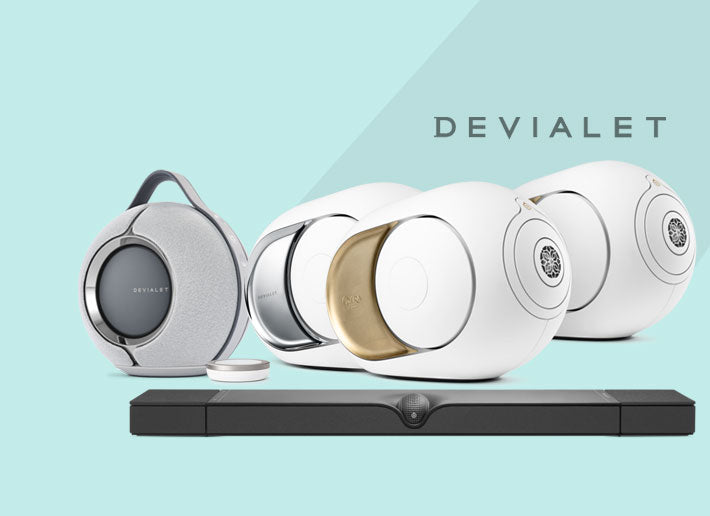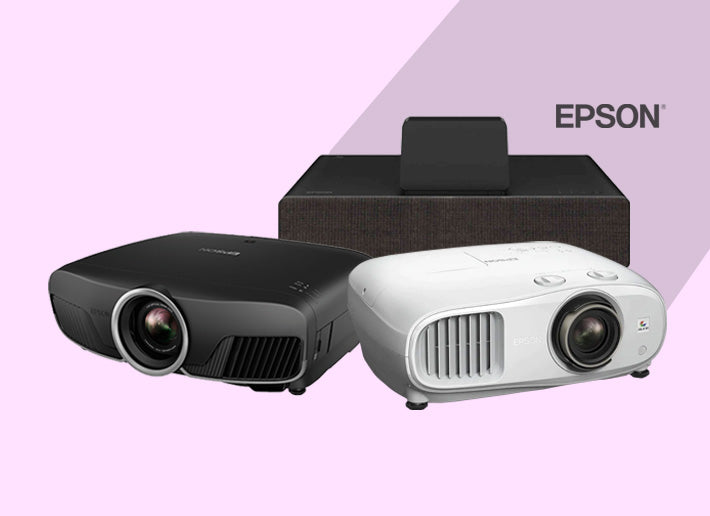Bridging the gap between HDR content and your display’s capabilities, we explore how tone mapping delivers depth, detail and colour that bring home viewing to life
You're watching a breathtaking movie scene where a golden sunset casts warm hues over rolling hills, while shadows stretch long across the landscape. In the theatre, the scene feels alive, with vibrant colours and intricate details. But when you play the same movie at home on your TV or projector, something feels off. The sunset loses its glow, the shadows lack depth and the richness of the scene fades away.
Why the difference? It comes down to how displays handle dynamic range—the spectrum of brightness and colour in a scene. And the solution that bridges the gap between cinematic perfection and home viewing? Tone mapping.
In the blog, we’ll take a closer look at what tone mapping is, how it works, why you need it and lots more. Let’s get into it.
Also Read: Taking Videos Up a Notch: Dolby Vision’s HDR Advantage
Tone Mapping and the Science Behind It
Tone mapping in video is the process of adapting high dynamic range (HDR) content for playback on displays that can't reproduce the full range of brightness and contrast. Modern HDR content, like Dolby Vision or HDR10, contains an incredible amount of detail, from the glimmer of sunlight on water to the deepest shadows in a forest. However, most TVs and projectors have limited capabilities, meaning they can’t fully display the range encoded in the content.
Tone mapping ensures that the most critical details are preserved by compressing the brightness and contrast to fit the display’s capabilities while maintaining the visual impact intended by the filmmaker. Without tone mapping, highlights might look blown out, shadows could lose detail and the overall scene might appear dull or washed out.
At the heart of tone mapping lies a challenge: translating HDR content into something that works on devices with vastly different abilities. A premium OLED TV can handle intense brightness and deep blacks, while a budget projector might struggle with both. HDR video content is mastered with a much higher dynamic range than most displays can achieve. For example, HDR standards like HDR10 and Dolby Vision can encode peak brightness levels of 1,000 nits or more. But many TVs can only display 300-500 nits and projectors are often even dimmer. Tone mapping compresses the brightness range while preserving the artistic intent, ensuring viewers still experience the scene's depth, contrast and vibrancy.
Tone mapping in video operates dynamically, often adjusting in real-time as scenes change. Imagine watching a movie with a bright desert sequence followed by a dark cave exploration. The tone mapping algorithm evaluates each scene's brightness levels and colours and adapts them to fit your display’s capabilities.

Image credit - Mixing Light
This involves two critical steps:
- Scene Analysis: The video processor analyses metadata (provided by formats like HDR10 or Dolby Vision) or directly examines the content’s brightness levels.
- Adjustment: The brightness, contrast and colour are compressed or scaled to fit within the limits of the TV or projector. For instance, a projector might downscale peak brightness but retain highlights' gradations to avoid losing detail.
Next, let’s take a look at tone-mapping techniques and why it even matters for a home theatre system.
Tone Mapping Methods and Its Benefits
When it comes to tone mapping for video, the approach can vary based on the device and content. Most TVs and projectors typically use one of two techniques.
Static Tone Mapping applies the same compression settings across an entire movie or show. This method is simple and effective for content with consistent brightness, like a romantic comedy or drama. However, it may struggle with dynamic content, where scenes vary wildly in brightness, such as action films or sci-fi epics.
Dynamic Tone Mapping adjusts settings on the fly, analysing each scene or frame in real-time. This is ideal for content with high variability, as it ensures bright outdoor scenes look vibrant while maintaining detail in darker indoor shots. TVs with advanced processing, like LG’s OLEDs or Samsung’s QLEDs, often feature dynamic tone mapping for enhanced performance.
For home theatre enthusiasts, a good tone mapping implementation can mean the difference between feeling immersed in a film and feeling disconnected. For example, a night sky filled with stars in a movie might appear blurred on a poorly mapped display and the sky could appear grey. Proper tone mapping ensures the stars remain sharp and the sky retains its inky blackness, preserving the scene's intended mood.
Challenges, Tools and Best Practices
While TVs have made significant advancements in HDR and tone mapping, projectors face unique challenges. They typically struggle with brightness, as their light source has to illuminate an entire screen from a distance. This makes it harder to achieve the intense highlights often found in HDR content.
Manufacturers address this with specialised tone-mapping algorithms designed for projectors. These algorithms focus on maintaining shadow detail and mid-tone accuracy, as extreme brightness isn’t achievable. Some projectors also offer manual tone mapping adjustments, allowing users to fine-tune the image for their specific setup.
When choosing a TV or projector for HDR video, pay attention to tone mapping capabilities. Look for devices that support:
- Dynamic Tone Mapping: Essential for handling HDR content with diverse brightness levels.
- HDR Standards: Devices that support formats like Dolby Vision and HDR10+ provide better metadata for tone mapping.
- User Controls: Advanced settings that let you tweak tone mapping for your environment. For instance, you can prioritise brightness for a projector in a bright room or enhance contrast for darker spaces.
Here’s what you want to do to get the most out of tone mapping on your TV or projector.
- Understand Your Display’s Limits: Know the brightness capabilities (measured in nits) and black-level performance of your device. This helps set realistic expectations.
- Calibrate Your Display: Use tools or professional calibration services to ensure your TV or projector is optimised for HDR. Many devices include tone-mapping presets. Choose one that suits your environment.
- Leverage Metadata: Formats like Dolby Vision automatically adjust tone mapping based on the content and your device’s specs. Enable these features if available.
- Experiment: Some displays allow manual adjustments for tone mapping. Don’t hesitate to tweak settings to find the perfect balance for your viewing environment.
Also Read: Elevate Your Entertainment: The Ultimate Guide to Modern Surround Sound
In our penultimate section, we’ll examine display calibration in more detail and its potential to elevate the viewing experience.
Display Calibration for Optimal Tone Mapping

Image credit - BenQ
Calibrating a TV or projector is a multi-step process that ensures accurate reproduction of colours, contrast and brightness—essential for effective tone mapping. Here’s how it’s done.
1) Adjusting Basic Settings
- Brightness and Contrast: Brightness controls the black levels, while contrast adjusts the intensity of highlights. Set these to ensure shadow details aren’t crushed and highlights retain detail.
- Sharpness: Keep this low to avoid artificial edge enhancement, which can interfere with tone mapping.
- Colour Temperature: Use a neutral setting like “Warm” or “Cinema” for a natural tone.
2) Using a Test Pattern
- Grayscale Patterns: These help adjust gamma and ensure smooth gradation from black to white.
- Colour Bars: Used to balance primary and secondary colours, ensuring accurate hues.
- Dynamic Range Patterns: Identify clipping in highlights and crushing in shadows.
These patterns are often available through calibration discs, streaming apps, or professional software.
3) Calibrating for HDR
HDR introduces unique challenges, such as high peak brightness and wider colour gamuts. Modern TVs and projectors often have presets like “HDR Cinema” or “Filmmaker Mode.” These are a great starting point but benefit from customisation. There are often hardware and software tools that can make this exercise easier and more accurate.
- Colourimeters: Devices like the X-Rite i1Display or SpyderX measure on-screen output to ensure alignment with HDR standards like Rec. 2020 or DCI-P3.
- Software Tools: Programs like CalMAN or HCFR provide step-by-step guidance to adjust gamma curves, luminance levels and colour accuracy.
4) Projector-Specific Calibration
- Projectors require special attention due to their dependency on screen size and ambient lighting.
- Screen Type: You want to calibrate for the reflectivity and colour neutrality of your screen.
- Ambient Light Levels: In darker rooms, tone mapping can better preserve shadow detail with brighter spaces needing an emphasis on mid-tones.
- Light Output: Adjusting lamp brightness or laser intensity balances peak brightness with black levels, as projectors typically have lower HDR performance than TVs.
5) Professional Calibration
For enthusiasts or professionals, hiring a certified calibrator is an excellent investment. They use advanced tools like spectroradiometers to fine-tune every aspect of your display, ensuring your tone-mapped content is viewed as intended by the creators. Proper calibration not only enhances tone mapping but also creates a more immersive and accurate viewing experience.
In Closing
As HDR adoption grows, tone-mapping technology continues to evolve. More displays aim to close the gap between HDR mastering and playback, reducing the need for heavy tone-mapping. Advances in AI processing are already helping devices better analyse and adapt to content in real time, delivering more accurate and visually stunning results.
Whether you’re watching a blockbuster on a cutting-edge OLED or enjoying a classic film on a home projector, tone-mapping ensures every frame looks its best. It’s the unsung hero of HDR, bringing the director’s vision into your living room. So next time you marvel at a perfectly rendered sunset or an intricately detailed night scene, you’ll know just how much work went into making it shine.
Explore our premium range of home theatre gear and contact us for a calibrated solution. Our team of experts can help you get up and running in no time.









